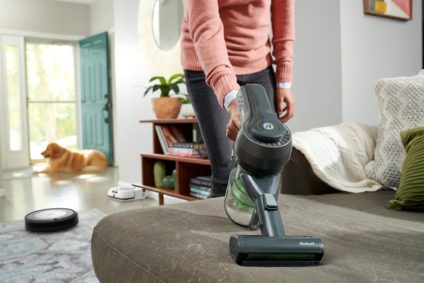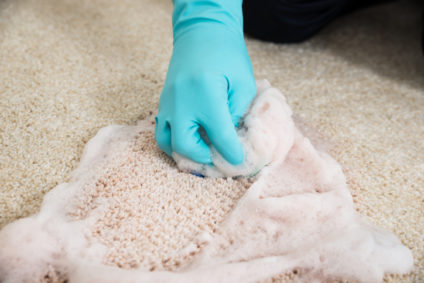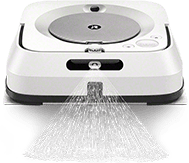How To Clean A Wool Rug At Home: 9 Tips & Tricks

Despite the apprehension, this type of rug doesn’t have to be a challenge to clean. In fact, we’re here to make it as easy as possible to keep your wool rugs clean and stain-free for years to come.
Have a Persian Rug too?
Professional Wool Rug Cleaning Cost
This isn’t an easy question to answer, because every single professional rug cleaning service in every city will charge differently for their services. Prices also change with the size of the rug and the type of cleaning service you choose (dry cleaning, stain removal, deodorizing, etc.).
There is a general range, however. This range for cleaning a 4×6 wool rug is: $35-$120.
The larger your rug, the greater the cost.
Similar principles apply when professionally cleaning Oriental rugs.
Check out our blog post to learn more:
DIY Oriental Rug Cleaning – Without the Cost of a Professional Clean

In that case, you may face an up-charge and you will not be able to choose the service provider ahead of time.
But there’s no need to worry about any of this at all, because you can get a great clean right at home.
Here are some tips and tricks for getting that first-rate clean without sending it out to a rug service.
Wool Rug Cleaning Tips: The Dos and the Don’ts

The dyes typically used are also natural – made of insects, flowers, spices, and other similar materials.
Because of the natural materials, it’s fairly easy to damage a wool rug without the proper cleaning methods. The fibers may fray. Colors may bleed or dull. Smells may remain locked within the fibers. You may even develop mold or mildew if there’s no proper drying period.
Don’t dry clean wool rugs
The bottom line is, wool rugs should never be dry cleaned.
Dry cleaning uses little to no water at all, but it also uses chemical cleaning solutions to remove stains and odors. While it might seem like a good idea to avoid water altogether when cleaning a wool rug, it’s actually very counterintuitive. In fact, you should be using a lot of water on your wool rug (you just need to dry it very well).
Dry cleaning isn’t advantageous because it doesn’t penetrate the fibers of the rug whatsoever. That is where the dirt and smells are trapped, which means they’ll often still smell dirty even after they’re cleaned.
Never use baking soda to clean your rug

And while sure, the mixture will do something, and eliminate some of the smell, the vinegar is doing all of the work.
Baking soda does absolutely nothing positive for wool carpet.
On the other hand, it may cause more harm due to its gritty nature. These very fine grains will bury deep within the absorbent wool fibers and won’t extract very easily.
Steam cleaning your wool rug will damage it
Steam cleaning has been a big trend lately, especially for cleaning hardwood floors (please, be really careful about which type of floor you steam clean).
Unfortunately, it doesn’t work quite as well for wool rugs, for several reasons.
The first is that you should never clean a wool rug with hot or warm water, or in this case hot evaporated water – steam. Hot water causes the natural dyes on a wool rug to run, and well… no one wants that (I mean… unless you’re conducting some type of tie-dye experiment with your rugs).
The second reason is, you’re generally running a steam cleaner back and forth over a rug.
Authentic wool rugs are handwoven, meaning their fibers are a bit like wood grains, going in one direction. You generally don’t want to go “against the grain” on a rug, because it’ll eventually cause this strange rippling effect in the fibers and leave larger gaps between each row.
To make matters worse, because they’re naturally spun fibers, they’ll loosen and fray a lot easier (not to mention some of the microfibers will come out with suction). Over time, your rug will look thinner, duller, and worn.
However, steamers can serve as very useful when cleaning hardwood floors
Only use cold water to wash your wool rug
We’ve touched on this a bit already, but hot water causes colors in your rug to run, particularly the color red.
Imagine you’ve just purchased a brand new red shirt and you’ve washed it in boiling water with your bright white sheets.
Some of you are cringing right now, because you’ve already experienced the pleasure of ruining your sheets this way. Sure, they come out a lovely pink and all, but I doubt you’ll ever get them bright white again, even with the best bleach soak.
But that’s just to illustrate the point… washing your rugs with hot water will cause them to bleed. Add some soap and agitate the fibers with a brush, going back and forth between rather than “with the grain,” and yeah, you’ll see some damage.
It may be subtle at first. You may not even notice it unless you get real close. But, over time, your rug will not look the same.
Those sharp lines and designs will start blending, and then you’ll just have a surrealist painting laying on your floor (hmm… that might not be so… nope, nope, that’s not good).
You absolutely can power wash your rug (on a lower setting)

It’s a way of agitating the dirt out of the fibers without a brush, and to really soak through those thick threads.
It’s also a really great way to get excess soaps out of the deeper recesses of your rug.
Here’s the thing though: professional cleaners own all the specialized agitators, the air dry tumblers and dusters…
Some may even have an underfloor suction system that allows them to soak the rugs and pull the solution and water through the bottom of the rug rather than scraping it off with squeegees and a powerful hose.
You don’t have access to a lot of this stuff at home. (We’ve seen some people vlogging the advice to bring them to car washes, but please don’t do that… car oil and wool rugs – any rugs – does not mix well.)
As a DIY solution, a powerful hose or a power washer is a great alternative to professional cleaning. It’ll allow you to do much of the same as the professionals – get deeper into the fibers without too much agitation.
If you can also raise your rug over some mesh or netted rubber mats for a bit of drainage underneath, all the better.
Just note: you don’t need high water pressure for this technique. Remember, these are still delicate fibers and dyes.
Vinegar is a good cleaner for wool, but it isn’t everything

We’ll even throw in some brownie points (because they’re better than bonus points), for the fact that vinegar can actually help to prevent colors from running on a wool rug.
Granted, it really only works during the actual dying process, but it’s a good thing to know, because it means you can clean your rug with vinegar without it causing damage to the dyes or fibers.
It can, however, help neutralize some odors (such as pet urine) and can kill some mold species that may build up from your rug being wet for too long.
Now, while all that sounds fine and dandy, know that vinegar isn’t everything. It’s not a magic elixir that’ll solve every problem with your wool rug.
In fact, you may end up with a vinegar smell stuck in your rug (it may neutralize over time).
What’s the solution? Use the vinegar, but dilute it with cold water and run it through the rugs rather than applying it to the top of the rug alone.
Don’t use a carpet cleaning machine
Wool tends to hold onto dirt solids, grime, and smells because all three bury themselves deep into wool fibers.
But that’s not wholly unlike any other carpet, right? So, you think, “Ah, I’ll just rent one of those carpet cleaners and do it easily at home,” because that’s completely logical.
You have a dirty carpet or rug = use a carpet cleaning machine!
Unfortunately, this solution is not woolsafe. Wool rugs are like your silky delicates you have to hand-wash without detergent and lay flat to dry in the shade.
They just don’t tolerate the kind of suction that those machines have, nor the heat that the machines often produce (many carpet machines heat up the water before splurting it onto your carpet / rug).
Another issue is the back and forth aspect of the machine, in combination with the suction. It’s not that there’s suction, it’s that the amount of suction with these machines while pulling against the grain – or direction of the fibers – may cause some damage.
(Note: your wool rugs still need regular vacuuming, and it is recommended you do so to manage the build-up of dirt between deep cleanings)
Flush through the wool to clean out urine smells and pet stains
We’ve mentioned this in our other articles – Persian rug cleaning, Oriental rug cleaning – and we’ll mention it here, because the technique stands as one of the best for getting delicate rugs truly clean.
Essentially, you want to raise your rugs a bit above a clean surface, whether that be a rubber mat with holes or you rig some kind of straining system over your tub, you want to have some way drain water through the rug.
This is contrary to how most people would clean their rugs (and even how some professionals may clean rugs), because we’re more familiar with less delicate rugs that have rubber underbellies or plain old carpets.
With those, simply using a machine or a detergent or even a steam cleaner will work to get up all the dirt and smell without causing any damage to the rugs themselves.
But for wool, which traps so much of the debris very deeply (particularly smells), the only way to get rid of it all is to get the water just as deep.
Since most cleaners and machines can only clean the surface of a rug, they just won’t be as effective as filtering water all the way through.
Oh, and there’s no scrubbing, detergents, or machines needed for this method either. Simply soak the rug, raise it to filter the water through, and repeat until the water that comes through the rug is “clean” (at least not brown or gray, but a bit white or clear).
Avoid using peroxide as a cleaner
A lot of people like to dab peroxide on stains because it’s a bleaching agent, and it’s pretty dang effective for even the toughest stains (looking at you, blood).
But the fact that it’s a bleaching agent is precisely why you should keep it away from your wool rugs.
Remember, those are natural dyes, they’ll bleed easily even with some of the milder soaps and detergents, not to mention a bleaching agent.
Then there’s this:
If you’ve ever used peroxide on an area of your clothing, you know that it starts to eat away at the natural fibers as well as the stain. They become somewhat thin and brittle, and you’re more likely to develop a hole in that particular spot.
Well, wool is a fiber, and it’ll certainly wear away over time, especially when encouraged along.
In other words… peroxide + wool rug = damaged wool rug.
Wool rugs may be notoriously challenging to clean and maintain, but some of that is just myth and hearsay. For instance, many people still believe you can’t use water on a wool rug at all. That is simply not true.
If you can dry your wool rug of all the excess moisture, and do so speedily and all the way through, then you absolutely SHOULD use water to clean your rug. It’s the best way to get all the smells and dirt out of it, frankly.
Yes, they’re delicate, but when you know a thing or two about how to clean a rug properly, it’s not so challenging.
In fact, you might even come to enjoy the lack of need for harsh cleaners and detergents, the carpet cleaning machines, and the trips to the dry cleaner.
Interested in learning how to clean your other rugs?













